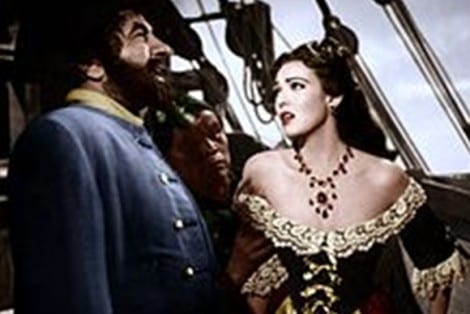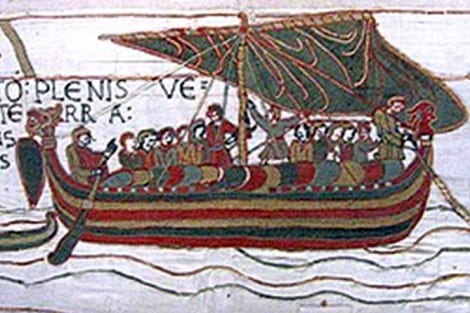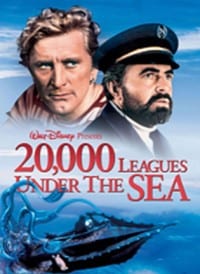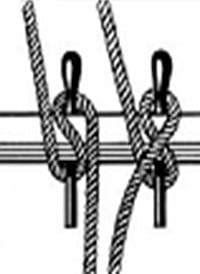 By Bob Currie, Vessel Examiner
By Bob Currie, Vessel Examiner
United States Coast Guard Auxiliary Flotilla 081-06-08
Who among you hasn’t, upon occasion, shouted “Land ho!” upon returning to port from a boat trip? Who among you does NOT participate in International Talk Like a Pirate Day (September 19)? Arrrrr! True aficionados of Talk Like a Pirate Day know that it was actor Robert Newton, who played Long John Silver/Blackbeard in the movies Treasure Island and Long John Silver, who inspired Talk Like a Pirate Day, and he is known as the patron saint of the Talk Like a Pirate movement.
Flotilla 081-06-08 is based at Coast Guard Station Galveston. The Coast Guard Auxiliary is the uniformed civilian component of the US Coast Guard and supports the Coast Guard in nearly all mission areas. The Auxiliary was created by Congress in 1939. For more information, please visit www.cgaux.org.
Robert Newton used an exaggeration of his English West Country dialect to create the stereotypical pirate voice. This column is dedicated to Robert Newton and is designed to familiarize you with some nautical terms and their origins, as well as the pirate terms popularized by the old pirate movies. Although “Arrrr!” is not a nautical term, it was the generous use of this word and “Yarrr!” that helped create the pirate persona. “Yar” is the West Country word for “yes.”

Robert Newton in “Blackbeard”
Ship ahoy, ten degrees off the starboard bow!
A ship is a vessel larger than a boat for transporting people or goods by sea. “Larger than a boat” is an important point, as calling someone’s ship a boat is an insult. The next time you take a cruise, ask any ship’s officer how long their boat is. You will NOT be invited to dine with the captain, guaranteed! By the way, “captain” comes from the Latin words “caput, capit”, which mean “head.”
In nautical terms, a degree is 1/360th of a circle or sphere (such as the earth’s sphere). Imagine a circle surrounding you in the horizontal plane. The beginning of that circle is right in front of your eyes, and is described as zero degrees. One 36th of that circle is ten degrees. If you hold your arms straight out from your sides to shoulder height, the arc from your left hand to your right hand describes 180 degrees. From either hand to zero degrees is 90 degrees. So, ten degrees is 1/9th of the way from your eyes to your hand, and is just an estimate meaning a short distance.
The easiest way to remember the difference between port and starboard is to remember that port is four letters, and left is four letters. Starboard has nothing to do with stars! The word starboard is derived from the Old English steorbord, which means the side on which the ship is steered. Since the steering oar was always on the right side of the boat, it would tie up to the wharf on the other side. Hence the left side was called port.

Steering Oar on the Starboard Side
The bow is the forward part of the hull of a ship or boat, the point that is usually most forward when the vessel is underway. The word derives from the Middle Norse word boech (shoulder). Both of the adjectives fore and forward mean towards the bow. The stern is the back or aft-most part of the ship or boat, and is typically defined as the area built up over the sternpost (the upright structural member at the rear of the boat to which are attached the transom (the surface that forms the rear of a vessel)).

Transom of a Ship- It’s on the Stern. Arrr!
20,000 Leagues Under the Sea, or Why Nautical Terms Can Be Hard to Fathom
In 1870 French nautical novelist Jules Verne pubished his famous novel 20,000 Leagues Under the Seas: A Tour of the Underwater World (The English translation generally uses “Sea” instead of “Seas.”) In my youthful ignorance, I remember reading the classic and thinking “20,000 leagues- I don’t know what a league is, but that has to be deep!” Turns out a league is a measure of horizontal distance, and one league is three nautical miles.  Why did Jules use the figure 20,000 leagues? It turns out that the circumference of the globe is roughly 21,600 nautical miles. The figure he used represented a trip around the globe in the electric powered submarine, Nautilus. Jules used metric leagues, and 20,000 metric leagues equals 21,600 English leagues. Go figure. Old Jules was way ahead of his time. Arrr!
Why did Jules use the figure 20,000 leagues? It turns out that the circumference of the globe is roughly 21,600 nautical miles. The figure he used represented a trip around the globe in the electric powered submarine, Nautilus. Jules used metric leagues, and 20,000 metric leagues equals 21,600 English leagues. Go figure. Old Jules was way ahead of his time. Arrr!
Fathom is a unit of depth measurement. It is important to know how deep the water is so that you don’t run your ship or boat aground. If you can’t fathom that concept, stick to riding rather than navigating. Fathom is derived from the German word fadum and the Old English word fathme, both of which mean “outstretched arms.” The average man’s outstretched arms span six feet, so a fathom is six feet deep. I have a fathomometer on my boat, as do many boats out on the water. We call them depth finders, and they convert fathoms to feet. The average depth of Galveston East Bay is one fathom. Land ho! Arrr!
“Scotty, I’ve got to have more power!” “I’m givin’ her all she’s got, Captain!”
Until the mid 19th century, vessel speed at sea was measured using a chip log. This consisted of a wooden panel, attached by a line to a reel, and weighted on one edge to float perpendicularly to the water surface and thus present substantial resistance to the water moving around it. The chip log was cast over the stern of the moving vessel and the line allowed to pay out. Knots placed at a distance of 47 feet 3 inches from each other passed through a sailor’s fingers, while another sailor used a 30-second sand-glass (28 seconds is the currently accepted timing) to time the operation. The knot count would be reported and used in the sailing master’s dead reckoning and navigation. The knot is important because of the length of a nautical mile (6080 feet), upon which the knot is based, is closely related to the circumference of the earth. The length of a nautical mile is equivalent to about one minute of latitude. One knot of speed is the equivalent of 1.151 miles per hour. An easy estimate of mph is to multiply the knot speed by 1.1. Or just set your GPS to measure in mph.
Another nautical unit of measure is the cable. A cable is 100 fathoms, and that is how long the average ship’s anchor cable was during the Age of Sail. The typical recreational boat doesn’t require an anchor quite that long. The recommended anchor cable length is five to seven times the depth of the water in which you intend to sail. For me, a 50-foot anchor line is plenty. If you plan on going out a ways, you might need more anchor line. The rougher the weather, the more anchor line you will need to hold your boat in place to weather out a storm should you be unable to navigate the high seas generated by a storm.
My captain was three sheets to the wind, so we stayed in port.
We all know that two (or three) sheets to the wind means drunk. The “sheet” in the phrase uses the nautical meaning of a rope that controls the trim of a sail. No, a sheet is not a sail- it is a rope. A sheet that is in the wind has come loose from its mooring and is flapping in the wind like a flag. A ship that has three jib sails to the wind would be sitting sideways to the wind and waves in hurricane conditions, causing it to roll wildly from side to side and in constant danger of rolling over with each wave. A totally inebriated person is out of control and in danger of crashing, just like a ship three sheets to the wind.
Arrr! Avast, ye maties! Belay that order!
Back to pirate talk popularized by the old Hollywood pirate movies and patron saint Robert Newton. Avast is from the Dutch houdvast, which means to hold fast, or, alternatively, stop. So what’s a mate?  In Australia a mate is your close friend, but at sea a mate is an assistant or subordinate. The first mate is just below the captain. A gunner’s mate is an assistant to the gunner, an important person to have aboard a pirate ship. Remember those sheets to the wind? They came loose from their belaying pins, which is a wooden dowel that is used for tying off a sheet. The belaying pin holds the sheet fast (avast). You get the picture. Arrr!
In Australia a mate is your close friend, but at sea a mate is an assistant or subordinate. The first mate is just below the captain. A gunner’s mate is an assistant to the gunner, an important person to have aboard a pirate ship. Remember those sheets to the wind? They came loose from their belaying pins, which is a wooden dowel that is used for tying off a sheet. The belaying pin holds the sheet fast (avast). You get the picture. Arrr!
For more information on boating safety, please visit the Official Website of the U.S. Coast Guard’s Boating Safety Division at www.uscgboating.org . Questions about the US Coast Guard Auxiliary or our free Vessel Safety Check program may be directed to me at [email protected]. I am available to perform free Vessel Safety Checks, and I will come to your location to perform them. SAFE BOATING!
[6-25-2018]

 Posted in
Posted in 























